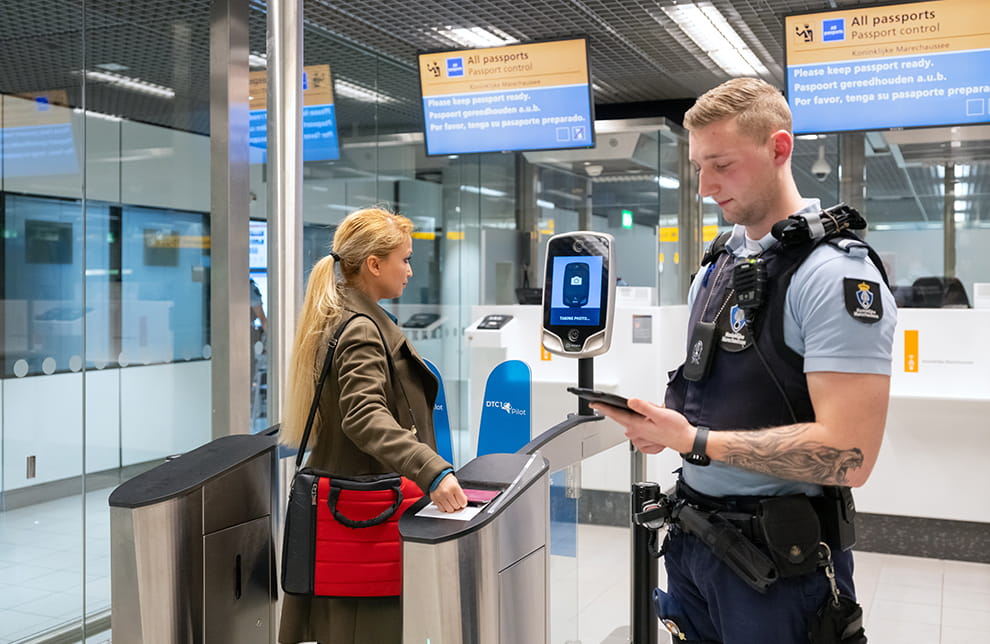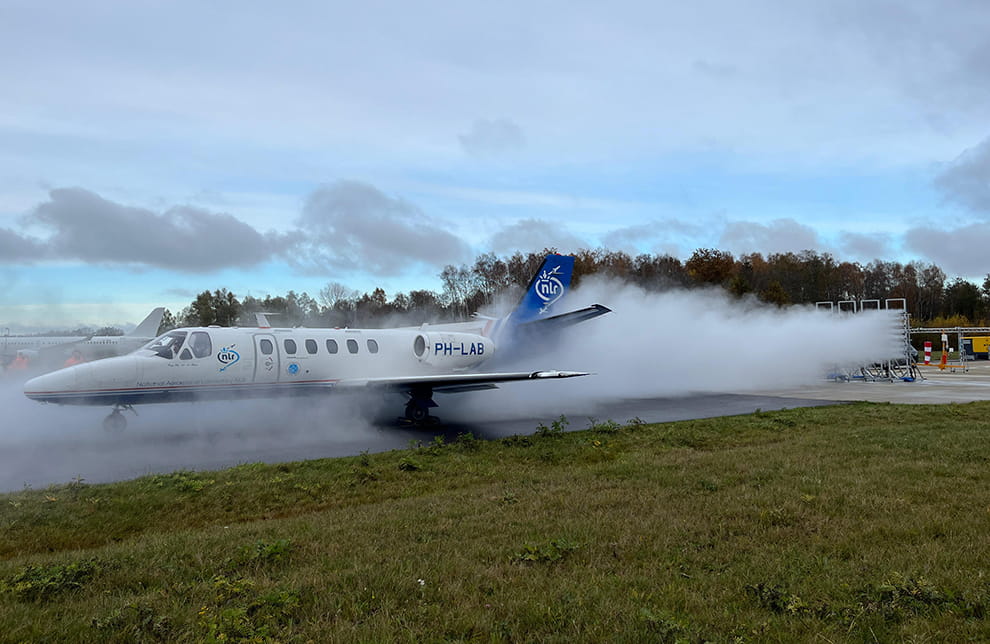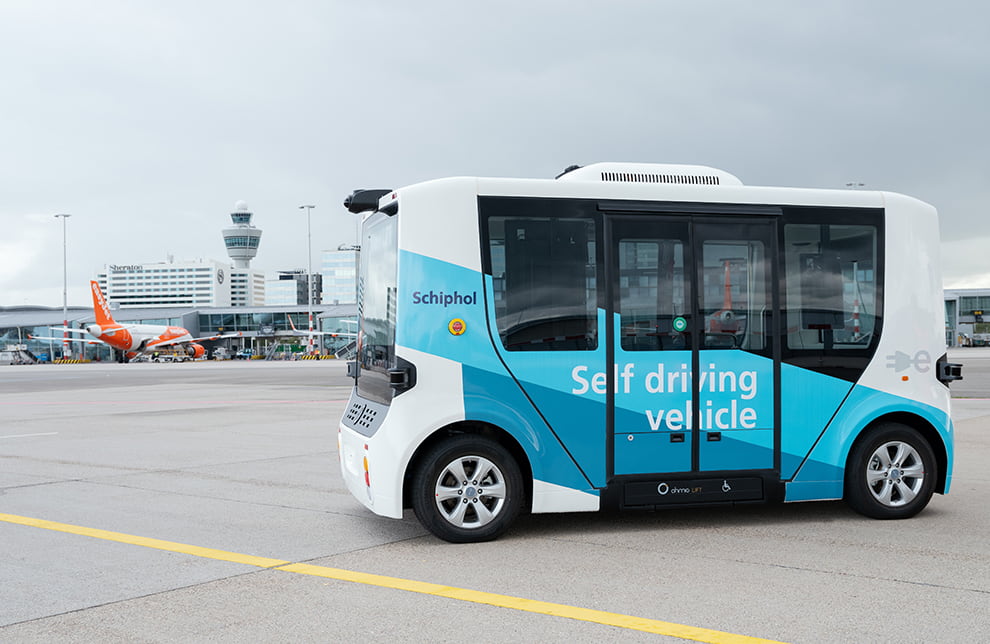Written by Dirk Bresser and Simon Prent: Sustainable taxiing: which route will we take?
Implementing sustainable taxiing at a busy Schiphol has implications for the management of ground traffic at the airport. In our previous blog we wrote about a European collaboration on the Advanced Surface Movement Guidance and Control Systems (A-SMGCS) for ground controllers. In this blog we talk in more detail about this new system, which is an important prerequisite for the introduction of sustainable taxiing at major airports.
Planning, routing and guidance
If sustainable taxiing became the norm, the number of movements on airport grounds would increase. A new planning, routing and guidance system for aircraft and vehicles at airside would be necessary to support ground controllers, since using current infrastructure and radio frequencies would quickly lead to capacity problems.
Navigation system
The Advanced Surface Movement Guidance and Control System (A-SMGCS) offers a solution. This system, being developed by Eurocontrol’s (SESAR) research department, can be compared to the navigation system in your car. You enter a destination (planning) and the navigation system determines the best route based on congestion, roadworks and other variables (routing).
Advanced Surface Movement Guidance and Control System
Airports do not yet have a complete system comparable to A-SMGCS. At the moment, planning and routing is mainly done manually by air traffic control. The introduction of the A-SMGCS for air traffic control essentially means the introduction of the backend of a navigation system at airports. We currently expect that to happen in 2024. The result will be a significantly reduced workload for air traffic controllers.
Route guidance
In addition to planning and routing, your navigation system has a screen on which you can see and follow your route (guidance), and a voice telling you where to go. In the cockpit, that voice comes from a real person. In some cars, you even have a head-up display option that projects the route onto the road in front of you. In self-driving cars, however, this all becomes obsolete – an autonomous vehicle can do everything itself.
Before 2030
SESAR expects the guidance function in A-SMGCS to be available at major airports before 2030. European airports and air traffic control have not yet decided which solution is the best. Because the car industry is so far ahead of aviation, it is tempting to follow their lead.
On board or on the ground
Just like with sustainable taxiing, A-SMGCS allows us to choose either a system in the aircraft (on board) or at the airport (on the ground). The factors we need to consider are also the same. For the airlines, a system in the plane is the most logical solution because they can use it everywhere they land. For the airports, a system at the airport makes more sense because it can be used irrespective of the airline.
Three possibilities:
There is a lot to be said for the second option. A-SMGCS involves processes that are highly airport-specific and these processes are enhanced when all airlines use them. This is also the most important consideration regarding the choice of guidance system. There are basically three possibilities:
1. Moving Map
A moving map is essentially an inbuilt navigation screen in the cockpit of a plane. There is currently no worldwide standard for this technology, which makes it unlikely that airlines whose home base is not Schiphol will install this system specifically for our airport. That is especially true for airlines that only occasionally come to the airport with many different planes. The investment in this system would just be too big. Whichever solution is chosen for on board, it will mainly be the home carrier who uses it. Schiphol’s current stance regarding A-SMGCS is that all airlines should be able to use it. Moving Maps is only an option if all airlines install it in their aircraft.
2. Follow the Greens
Another option is Follow the Greens. This system involves green lights being installed on the taxiways so that pilots can follow the lights to the gate. This meets the requirement for all airlines to be able to use the system and would help ground controllers, since aircraft would follow the route indicated by lights that switch on automatically. A big disadvantage to this system is the massive investment that it requires. Then there are also the issues of lead time and disruption caused by works that would have to be carried out on the taxiways for years to come (in addition to works already planned). A study into Follow the Greens is being conducted at Schiphol. We are currently in the evaluation phase.
3. Autonomous airside operations
The third option is, just like the car industry, to expand on the autonomous vehicles concept. In that case, guidance would no longer be necessary seeing as computers do not have eyes… In the blog about how sustainable taxiing works, we mentioned what the possibilities are in terms of autonomy. Contrary to cars, it is unlikely that aircraft will become self-driving. There is, however, a chance that airports introduce a system of autonomous vehicles that connect to aircraft. Examples of this include the autonomous Taxibot and a system to tow aircraft (ATS).
Completing the circle
And so the circle is complete. Sustainable taxiing requires ground controllers’ workload to be lightened – a solution offered by autonomous guidance. At the same time, the solution for autonomous guidance is a (modified) vehicle that can be used for sustainable taxiing. It seems tempting to look for an overall solution that would resolve these issues all at once. However, a lot more research is needed before we can decide what the future will look like.
Further investigation
We are conducting that research in various ways. It is being facilitated by the aviation sector at Schiphol that will develop a joint roadmap for sustainable taxiing in 2021. Furthermore, a Schiphol-wide and European vision regarding ground movements is being devised that will kick start the development of sustainable concepts in Europe.
About the sustainable taxiing blogs
We have given an outline of sustainable taxiing in a series of eight blogs. In these blogs, we explain why introducing sustainable taxiing is more complex that it may seem at first, and that there are many variables and challenges. The aviation sector works together closely to come up with and develop solutions. Now that the feasibility study has been published, it is time to prepare for the next steps. There will be another series of blogs in the near future in which we will delve deeper into the subject and give you more insight into sustainable taxiing developments at the airport.
Read the previous blogs
-
Tap and go with your Digital Travel Credential!
Published on:Can you board and cross the border faster with a digital travel document? At the request of the EU, we are testing a DTC together with the government and KLM.

-
Test capturing ultrafine particles with droplets
Published on:We are working diligently to reduce the amount of ultrafine particles. A possibility is the use of water droplets to remove ultrafine particles from the air.

-
Autonomous Bus Initiative
Published on:Our ambition: operating the world's most sustainable and top-tier airports by 2050. With this in mind we're putting autonomous buses to the test on airside.
